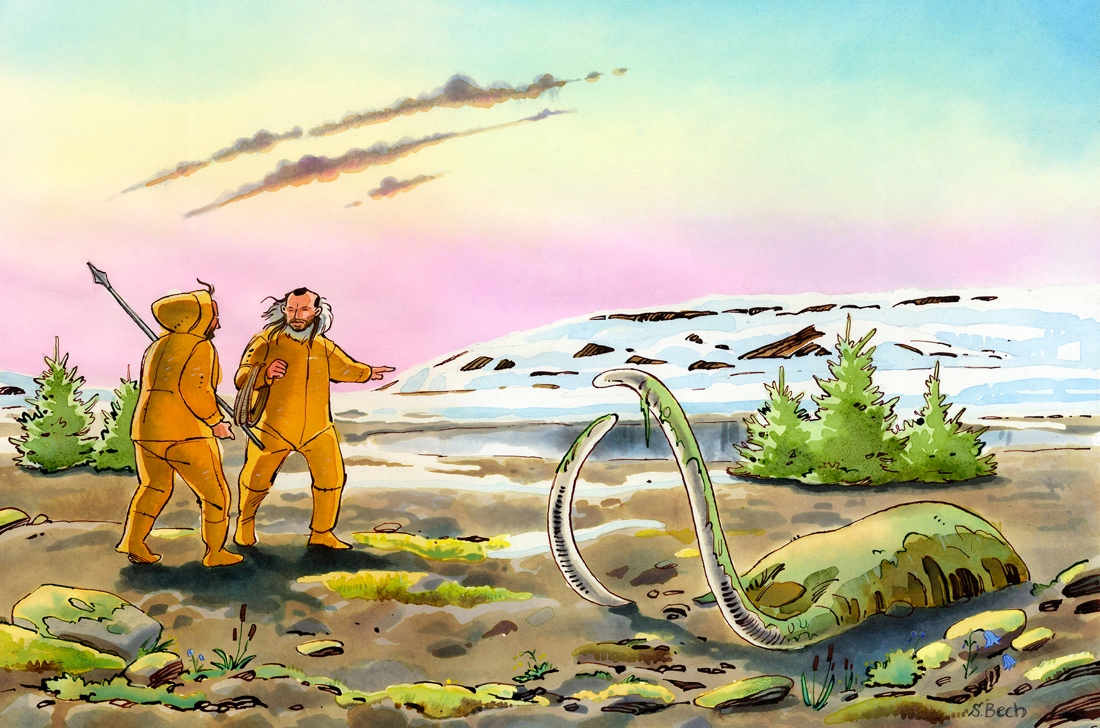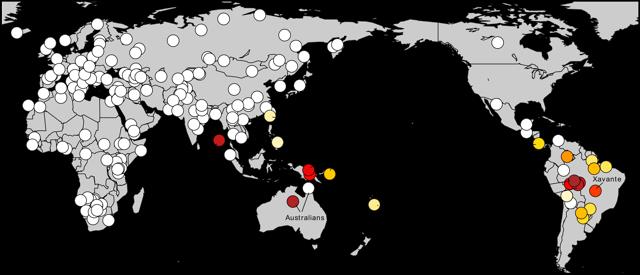
It remains a mystery as to when and how this genetic signature from an Australasia group in the Pacific they call "Population Y" made its way to the Amazon, scientists added.
Most genetic studies have suggested that all Native Americans analyzed to date can trace much or all of their ancestry to a single common origin — a population from Eurasia that probably migrated to the Americas more than 15,000 years ago, back when lower sea levels exposed the Bering land bridge known as Beringia that connected the continents. Some Native Americans from North America and the Arctic may also trace other parts of their ancestry to more recent waves of migration.
However, a number of prior studies of skull shapes hinted that two distinct groups entered the Americas. While one Asian type is similar to the vast majority of modern Native Americans, an earlier type seen in skeletons in Brazil and elsewhere resembled modern people from Australasia — a region that includes Australia, New Zealand, New Guinea and neighboring Pacific Islands — and even some African groups.
To shed light on this mystery, scientists analyzed the DNA of 30 Native American groups from Central and South America and from 197 non-American populations sampled worldwide.
The researchers found that some Native American groups from the Amazon rainforest — also known as Amazonia — derive a fraction of their ancestry from a population that is more closely related to the Onge from the Andaman Islands in the Bay of Bengal, New Guineans, Papuans and indigenous Australians than it is to present-day Eurasians or Native Americans.

Present-day Native American populations from North and Central America seem to lack this genetic signature. The investigators propose that a group they call "Population Y" — named for Ypykuéra, which means "ancestor" in the Tupi language family spoken in Brazil — passed on this Australasian genetic signature to Amazonians. Population Y had already genetically intermingled with a lineage related to Native Americans by the time it reached Amazonia.
It remains uncertain when and how Population Y reached South America. "We cannot say much about the story of how this genetic link came about," Skoglund told Live Science. "This finding just raises more questions we need to answer about American history."
Still, the researchers do not believe this genetic signature came by boat in the last few thousand years. "We think intermingling happened earlier, potentially among the earliest colonizers of the Americas," Skoglund said. "They probably came over Beringia."
This finding is one of several recent genetic surprises suggesting links between Amazonia and the Pacific. In 2013, scientists in Brazil unexpectedly found Polynesian DNA in the bones of the Botocudo, now-extinct Native American hunter-gatherers who once lived in Brazil's interior. However, Skoglund noted the genetic signature in the Amazonians his team analyzed differed from what was seen in the Botocudo.
The researchers suggest analyzing DNA from ancient remains from across the Americas to help solve these mysteries. They detailed their findings online today (July 21) in the journal Nature.



Reader Comments
to our Newsletter